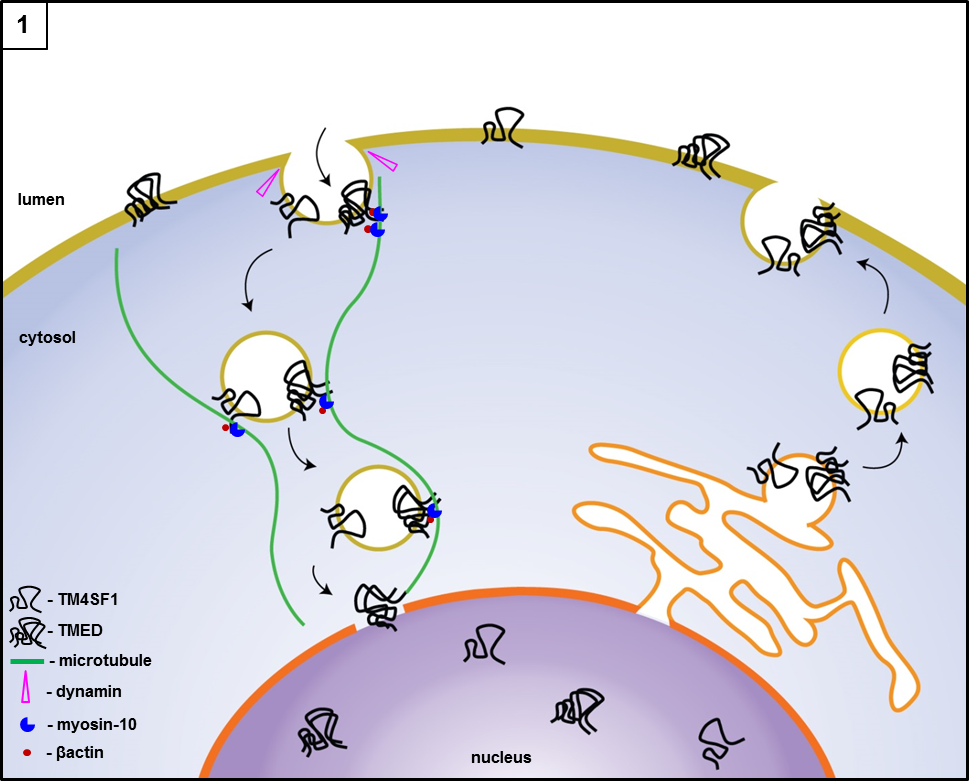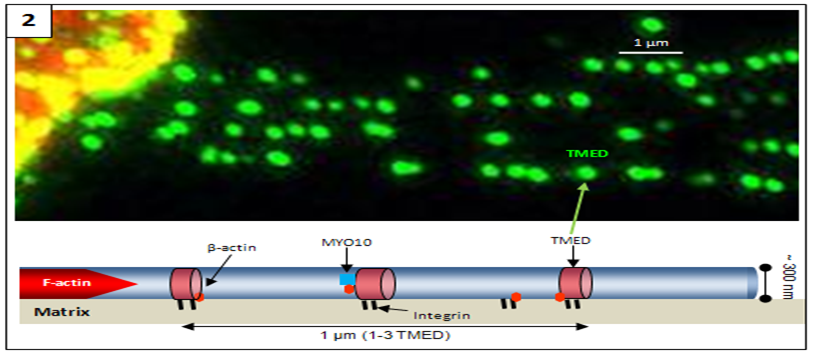 Jaminet Lab
Jaminet Lab
The two faces of TMED
- On an endothelial cell’s luminal (blood vessel) side, TMED act as a vehicle that takes
on cargo and delivers it to the cytoplasmic and nuclear compartments for the
refulation of proliferation and migration.
- On the abluminal (tissue) side, TMED interact with integrins and assist cell attachment to
matrix and facilitates nanopodia formation for movement and intercellular communication.


I am currently pursuing the hypothesis that TM4SF1 is:
- an endocytic vehicle that delivers cargos to specific intracellular locations, largely
the nucleus, for the regulation of proliferation and migration.
- a molecular facilitator that recruit molecules to TMED for intercellular interactions
through nanopodia.
Studies currently underway include investigations of TM4SF1 internalization mechanisms
and identification of cargo proteins. We have so far identified fourteen signaling
molecules as TM4SF1 cargo proteins.
Ongoing Translational Research:
- TM4SF1 is a uniquely attractive solid cancer therapeutic target due to (a) its ability
to internalize to the cytosol and nucleus, and (b) its high expression in tumor
vascular endothelial cells and tumor cells, but low expression in normal vascular
endothelium and other normal cell types. We have developed
anti-human TM4SF1 antibodies
and our current focus is to evaluate TM4SF1 as a cancer therapeutic target.
- investigation of the effect of TM4SF1 single nucleotide polymorphisms on TM4SF1
endocytosis and clinical outcomes in cancer and hemorrhagic stroke.
- anti-TM4SF1-linker diagnostic imaging for use in solid cancer diagnosis, prognosis, and
patient stratification or personalized medicine.


 Jaminet Lab
Jaminet Lab




